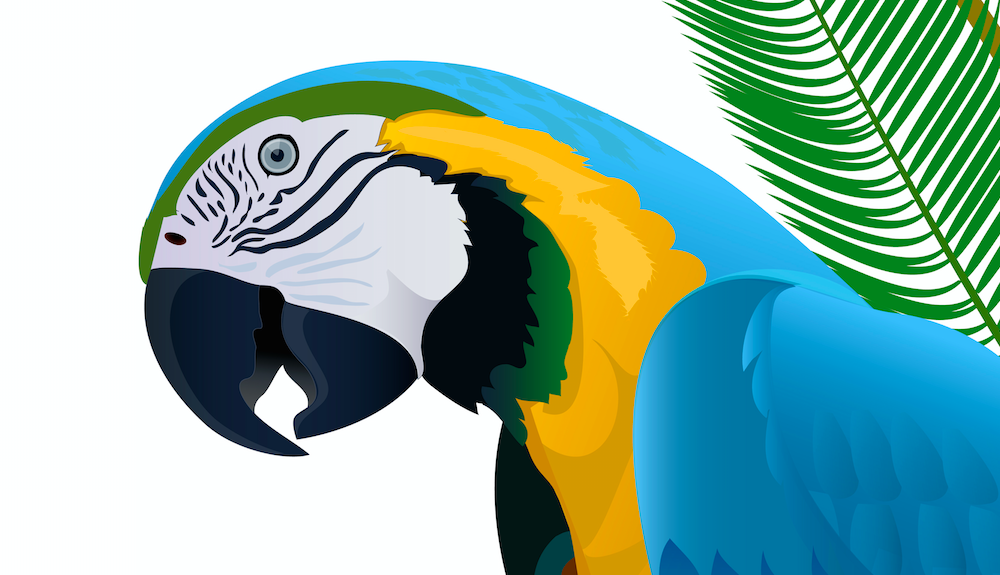More than the story of a search to end suffering — to provide military veterans burdened with post traumatic stress disorder (PTSD) relief — the captivating long form journalistic masterpiece written by Charles Siebert for The New York Times Magazine titled “What Does a Parrot Know About PTSD” is about an endearing cast of lovable characters.
There’s the aptly named Lilly Love, the former United States Coast Guard helicopter rescue swimmer.
There’s Cashew, the six-inch-tall female caique parrot from the Amazon Basin. And Phoebe, Dino and Kiki, three umbrella cockatoos.
There’s Jim Minick, a former U.S. Navy helicopter-squadron member who did three tours of duty overseas suffered debilitating injuries after falling from his chopper.
There’s Matt Simmons, current bird sanctuary manager and former U.S. Navy yeoman who did a tour in Bahrain in 1991, “tethered to the belt of Navy SEALs” documenting “beneath the thick smoke all the slayings and how many targets the planes had accurately hit”.
There’s, also, this nice little graph from Siebert that partly sums up the unlikely relationship between the PTSD sufferer and the anguished, tormented parrot:
And now, in yet another unlikely occurrence, parrots, among the oldest victims of human acquisitiveness and vainglory, have become some of the most empathic readers of our troubled minds. Their deep need to connect is drawing the most severely wounded and isolated PTSD sufferers out of themselves. In an extraordinary example of symbiosis, two entirely different outcasts of human aggression — war and entrapment — are somehow helping each other to find their way again.
And this other pretty patch of words:
‘‘You can look in their eyes,’’ Love said, returning with Bobbi, ‘‘any of these parrots’ eyes, and I myself see a soul. I see a light in there. And when they look at you, they see right into your soul. Look around. They’re all watching. They notice everything. It’s intense.’’
Oh, and this one, too. Which will either make you cry or stare out the window for an amount of time you probably won’t be able to account for afterward:
‘‘When examined through the lens of complex PTSD,’’ Dr. Gay Bradshaw, a psychologist and ecologist and an author of the study, wrote, ‘‘the symptoms of many caged parrots are almost indistinguishable from those of human P.O.W.s and concentration-camp survivors.’’ She added that severely traumatized cockatoos ‘‘commonly exhibit rapid pacing in cage, distress calls, screams, self-mutilation, aggression in response to . . . physical contact, nightmares . . . insomnia.’’
Veterans, of course, share similar psychological scarring, but whenever I asked any of them how it is that the parrots succeed in connecting where human therapists and fellow group-therapy members can’t, the answer seemed to lie precisely in the fact that parrots are alien intelligences: parallel, analogously wounded minds that know and feel pain deeply and yet at a level liberatingly beyond the prescriptive confines of human language and prejudices.
Mr. Minick puts it succinctly, and beautifully:
‘‘They look at you, and they don’t judge,’’ Jim Minick, the badly injured helicopter-squad member, told me. ‘‘The parrots look at you, and it’s all face value. It’s pure.’’
And so does Mr. Simmons, a tad more longwindedly, but just as eloquent:
There are things I have seen that will never leave me. There’s this huge sack of guilt and shame and pain that I carry with me, and I got it when I was 18 years old in Bahrain. Now, when I’m with a parrot, it’s not a total time-change thing, but I do have to act like a 12-year-old boy again. And here’s why. Because parrots are not domesticated animals. They haven’t been bred for hundreds of years to be at my feet.’’ Simmons paused for a sip of Coke, the third one of the night. ‘‘So in order to have a relationship with a parrot, that parrot has to select me. In order for that to happen, that parrot has to be comfortable. I have to come in open and quiet and calm. Much like that 12-year-old boy that met the mean dog next door and never had a problem. Much like that 12-year-old boy that went hiking and saw a mountain lion. I’m acting like the 12-year-old boy again around the parrots, and what that does is help me confront my trauma rather than carry it around. Because now I’m with a psychiatrist, and I’m talking about how this bird didn’t feel so good today and wasn’t very comfortable and was kind of hiding in the back of the cage, and the psychiatrist goes, ‘Hmm, you’re starting to talk about emotions.’ I’m talking about how the bird was feeling, but I’m also transferring my own emotions. So being with the parrots allows me to take that third-person look at my own trauma, which you can never do when you’re whacked out on Vicodin and Budweiser and living under a cement highway bridge.’’
Read the engrossing piece in its entirety below:
An unexpected bond has developed between damaged parrots and traumatized veterans https://t.co/0Zf0VISbOH pic.twitter.com/qXd7FbyXbv
— The New York Times (@nytimes) January 31, 2016
What does a parrot know about PTSD? Everything. And nothing.




































